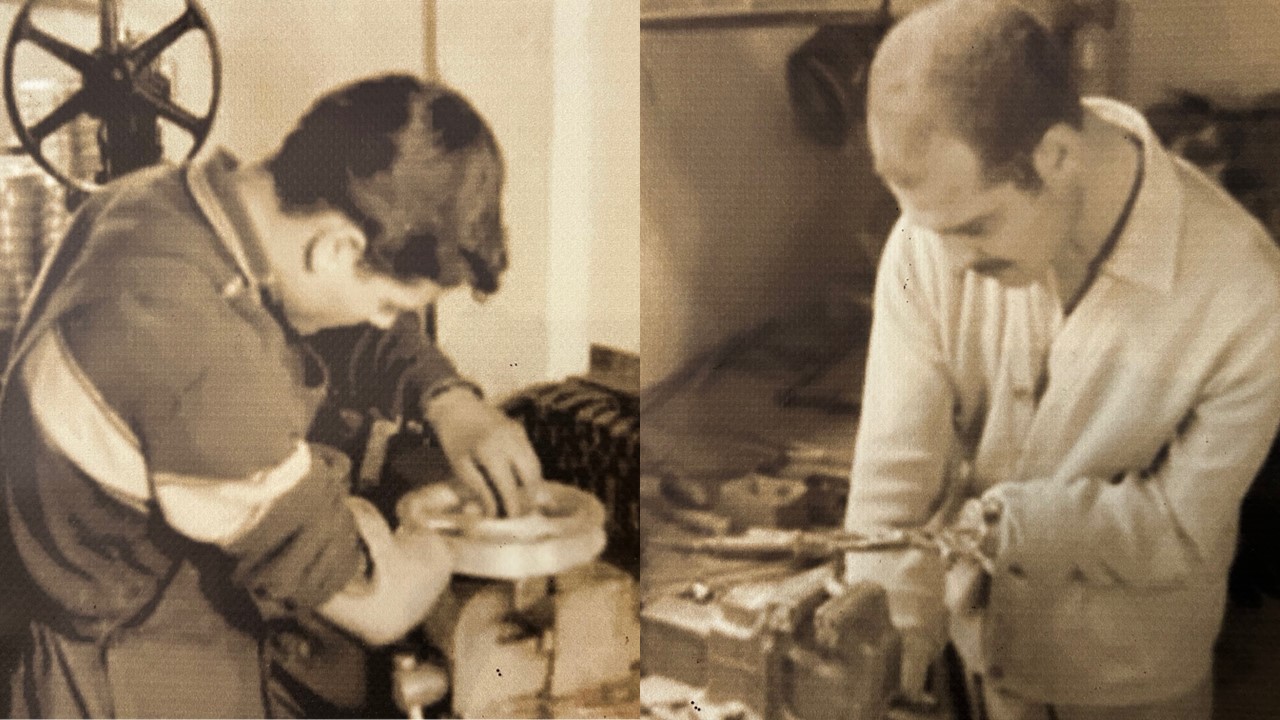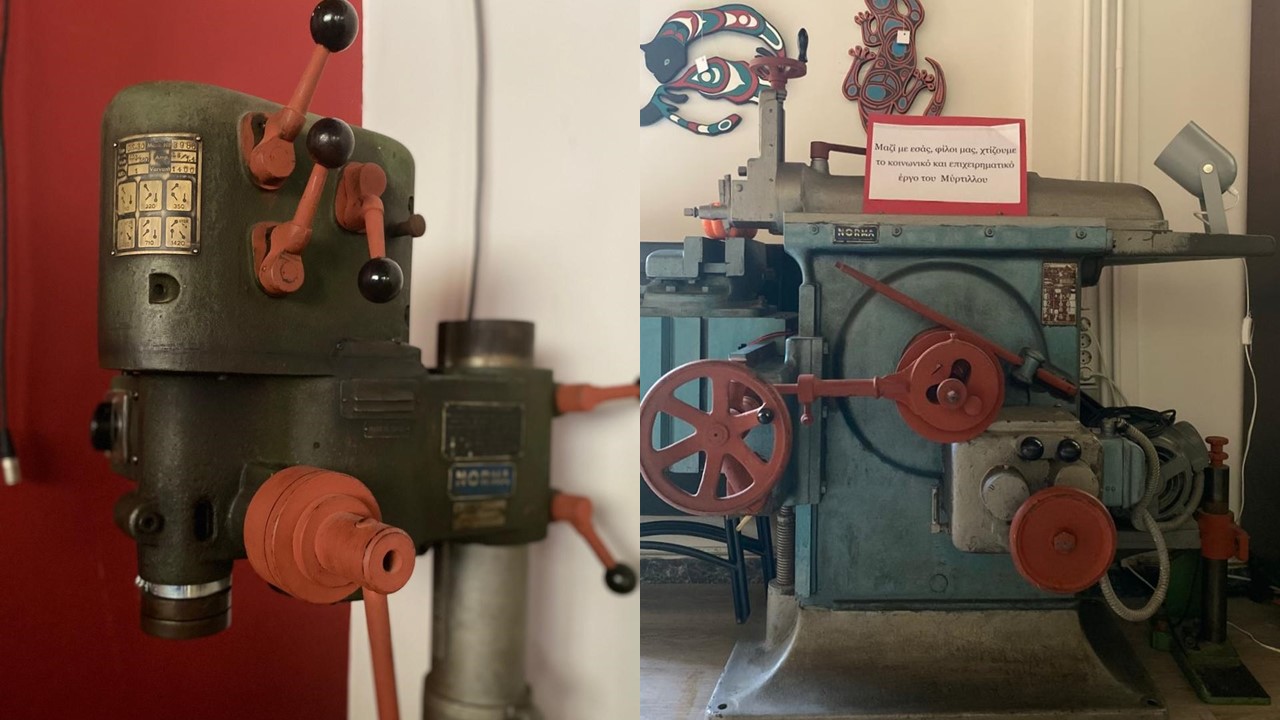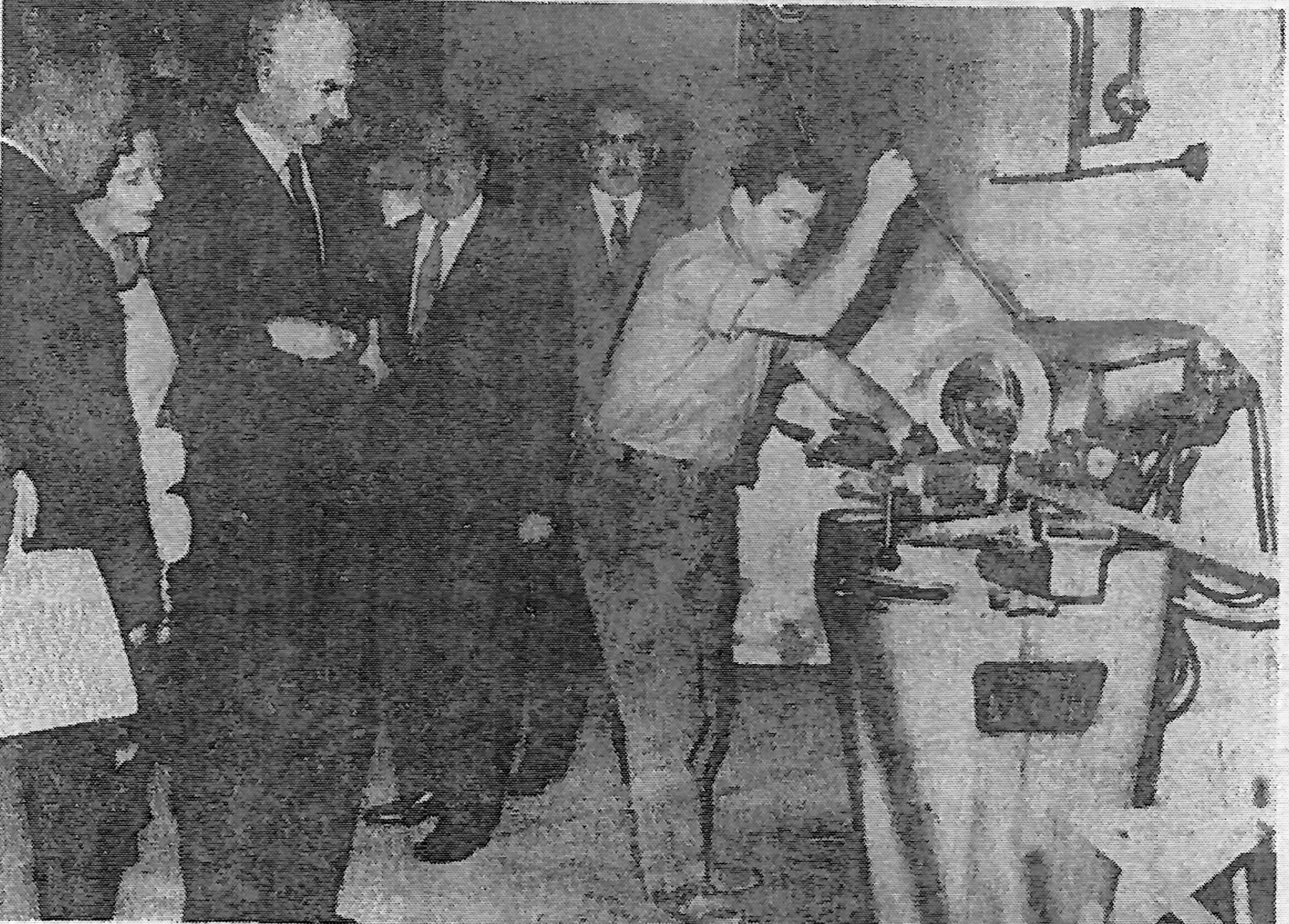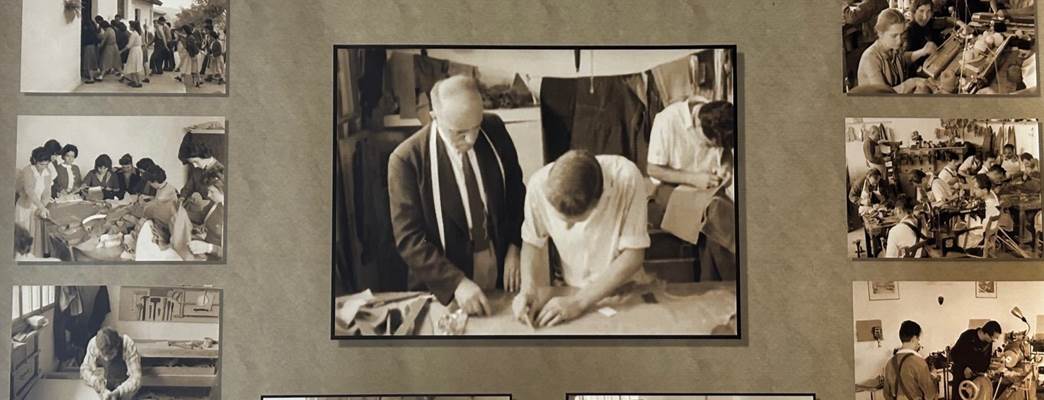From rehabilitation to empowerment
It all began in the 1950s, when Greece sought to build a center for the rehabilitation of citizens with disabilities, especially those affected by war. In 1957, the Norwegian Refugee Council stepped in to give life to this initiative, transforming it into a space of skills, dignity, and purpose.
Thanks to a grant of 500,000 NOK, a vocational training center for refugees was established on the premises of what was then known as KAPAPS. Two dedicated Norwegian instructors offered workshops in bookbinding, knitting, and carpentry were established, equipped with machinery from Norway. The workshops helped young people with disabilities learn a trade, gain confidence, and re-enter society with pride.

(An old photograph showing two men working at the center during their rehabilitation into the Greek workforce.)
Norwegians and Greeks working side by side
A Greek man by the name of Fotis Papailias was appointed as a teacher and assistant to Norwegian instructor Torer Thoresen in March 1957. He played a crucial role in setting up the machine, in facilitating the workshops and in developing teaching materials, as there were no suitable textbooks. His artistic talent, initiative, and efficiency were especially noted in the creation of instructional diagrams and project drawings.
Teaching was based on hands-on, productive work, which required significant preparation. Papailias handled this workload effectively and was praised for being a popular and skilled teacher whose students quickly mastered complex tasks. In addition to mechanics, he also taught math, physics, and drawing to students in other workshops.

(Machinery brought from Norway as part of the funded project.)
Prime minister Einar Gerhardsen visits the center
During a visit to Israel and Greece in 1961, Prime Minister Einar Gerhardsen and Mrs. Werna Gerhardsen stopped by KAPAPS. They expressed pride and admiration for the center’s impact. They saw modern facilities, including a prosthetics workshop, and witnessed the students’ enthusiasm and craftsmanship, especially two young amputees who had regained work skills with artificial feet.
The Greek authorities eventually took over administration of the institute, which the Prime Minister welcomed. Additional Norwegian efforts included donations for agricultural equipment and funding a home for elderly Armenians in Salonika, named after Fridtjof Nansen, honoring his work for Armenian refugees.

(Picture of Einar Gerhardsen and his wife visiting the KAPAPS rehabilitation center)
In Modern Times
Myrtillo Café: A modern chapter
Today, the story of empowerment and inclusion continues through Myrtillo, a pioneering Social Cooperative Enterprise that operates within the park. Founded in 2013, Myrtillo offers employment and training to young people from vulnerable social groups, including individuals with physical or mental disabilities. Its mission: full inclusion in the workforce and society.
The space of Myrtillo café at the park – nowadays known as the Park for the Child and Culture in Ampelokipi – hosts the actual equipment donated by the Norwegian Refugee Council back in the late 1950. Both the park and the café are open to the public and the equipment can be seen by all visitors.
With support from the EEA Grants - Norway’s commitment to reducing social and economic disparities in Europe - Myrtillo brings this legacy to life every day.

(The old machinery is now being put to new use by the Myrtillo Café.)
A shared commitment
From 1957 to today, this Norwegian - Greek partnership has shown that inclusion is a shared commitment. Thanks to the EEA Grants - Norway's' funding tool to combat inequalities and support inclusion in Europe - we will continue to support our joint efforts in Greece, together with local governments, academia, civil society, and local communities who share our vision for a more inclusive and democratic Europe.
